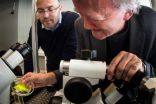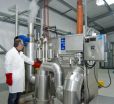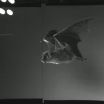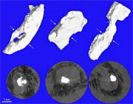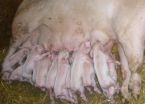(Press-News.org) We all want to feel like we're free-thinking individuals, but there's nothing like the power of social pressure to sway an opinion. New research suggests that people do change their own personal judgments so that they fall in line with the group norm, but the change only seems to last about 3 days. The research is published in Psychological Science, a journal of the Association for Psychological Science.
This is a photo of a figure standing out from the crowd."Our findings suggest that exposure to others' opinions does indeed change our own private opinions — but it doesn't change them forever," says psychological scientist and study author Rongjun Yu of South China Normal University. "Just like working memory can hold about 7 items and a drug can be effective for certain amount of time, social influence seems to have a limited time window for effectiveness."
The fact that personal judgments are swayed by the opinions' of others is a well-established phenomenon in psychology research.
But it's unclear whether oft-observed social conformity reflects public compliance, motivated by a desire to fit in with the group and avoid social rejection, or private acceptance, which leads to a genuine change in personal opinion that persists even when social influence is removed.
Yu and colleagues Yi Huang and Keith Kendrick decided to investigate this question in the lab. They recruited Chinese college students to participate in a study exploring how "people perceive facial attractiveness." The students looked at 280 digital photographs of young adult Chinese women and were asked to rate the attractiveness of each face on an 8-point scale.
After rating a face, they saw the purported average of 200 other students' ratings for that face. Importantly, the group average matched the participant's rating only 25% of the time. The rest of the time, the group average fell 1, 2, or 3 points above or below the participant's rating.
The students were brought back to the lab to rate the faces again after either 1 day, 3 days, 7 days, or 3 months has passed.
The data showed that the group norm seemed to sway participant's own judgments when they re-rated the photos 1 and 3 days after the initial session.
There was, however, no evidence for a social-conformity effect when the intervening period was longer (either 7 days or 3 months after the first session).
According to the researchers, the fact that participants' opinions were swayed for up to 3 days suggests more than a superficial lab-based effect — rather, group norms seem to have had a genuine, albeit brief, impact on participants' privately held opinions.
These studies are notable, says Yu, because they were able to control for methodological issues that often arise in studies that use a test-retest format, such as the natural human tendencies to regress to the mean and to behave consistently over time.
The one question that Yu and colleagues still don't know the answer to is why the effect lasts for 3 days. They plan on investigating whether there might be a neurological reason for the duration of the effect, and whether the effect can be manipulated to last for shorter or longer durations.
INFORMATION:
This study was supported by the National Natural Scientific Foundation of China (Grant 31371128 to R. Yu) and by the Scientific Research Foundation of Graduate School of South China Normal University (Grant 2013kyjj060 to Y. Huang).
For more information about this study, please contact: Rongjun Yu at rongjun.yu@gmail.com.
The article is available found online: http://pss.sagepub.com/content/early/2014/05/20/0956797614532104.abstract
The APS journal Psychological Science is the highest ranked empirical journal in psychology. For a copy of the article "Conformity to the Opinions of Other People Lasts for No More Than 3 Days" and access to other Psychological Science research findings, please contact Anna Mikulak at 202-293-9300 or amikulak@psychologicalscience.org.
Personal judgments are swayed by group opinion, but only for 3 days
2014-05-23
ELSE PRESS RELEASES FROM THIS DATE:
Social marketing at the movies
2014-05-23
Word-of-mouth marketing is recognized as a powerful route from long-tail sales to blockbuster, whether one is talking about the latest fishy ice cream flavor or a Hollywood romantic comedy. In the age of social media and online networking sites, such as Twitter and Facebook, the potential for spreading the word could mean the difference between consumers seeing a product as the best thing since sliced bread or the most rotten of tomatoes.
Chong Oh, Assistant Professor of Computer Information Systems at Eastern Michigan University, in Ypsilanti, Michigan, USA, has analyzed ...
A new way to make sheets of graphene
2014-05-23
CAMBRIDGE, Mass-- Graphene's promise as a material for new kinds of electronic devices, among other uses, has led researchers around the world to study the material in search of new applications. But one of the biggest limitations to wider use of the strong, lightweight, highly conductive material has been the hurdle of fabrication on an industrial scale.
Initial work with the carbon material, which forms an atomic-scale mesh and is just a single atom thick, has relied on the use of tiny flakes, typically obtained by quickly removing a piece of sticky tape from a block ...
Breakthrough method for making Janus or patchy capsules
2014-05-23
Hollow capsules that have a selectively permeable shell are promising candidates as tiny containers for molecules, particles or bubbles, and are becoming increasingly important in a wide variety of applications. But making these kinds of capsules with more than one kind of substance on their shells has been challenging – until now.
In a article in the latest edition of Nature Communications, NTNU researcher Jon Otto Fossum and Paul Dommersnes from the University of Paris, Diderot, were part of a team that showed that both Janus and more advanced patchy capsules can ...
Straw from oilseed as a new source of biofuels
2014-05-23
The bright yellow fields of oilseed rape are a familiar sight at this time of year, but for scientists what lies beneath is just as exciting.
Researchers at the Institute of Food Research are looking at how to turn straw from oilseed rape into biofuel. Preliminary findings are pointing at ways the process could be made more efficient, as well as how the straw itself could be improved.
Straw from crops such as wheat, barley, oats and oilseed rape is seen as a potential source of biomass for second generation biofuel production. Currently the UK produces around 12 million ...
Tiny muscles help bats fine-tune flight, stiffen wing skin
2014-05-23
VIDEO:
As bats fly the air pushes their compliant skin around. A new study provides evidence that they control wing stiffness and shape using muscles embedded in their skin.
Click here for more information.
PROVIDENCE, R.I. [Brown University] — A new study of bats reveals a capability within their wondrous wings that may help them fine-tune their flight.
Bats employ a network of nearly hair-thin muscles embedded in the membrane of their inherently floppy wing skin to adjust ...
NASA sees first tropical depression of Eastern Pacific hurricane season
2014-05-23
One week after the official start of hurricane season in the Eastern Pacific Ocean, the first tropical depression was born hundreds of miles southwest of Mexico. NASA's TRMM satellite and NOAA's GOES-West satellites provided looks inside and outside of the depression's clouds. Hurricane season in the Eastern Pacific began officially on May 15.
On May 21 at 22:59 UTC (6:59 p.m. EDT) the Tropical Rainfall Measuring Mission (TRMM) satellite passed over System 92E, which was what Tropical Depression 1E (TD1E) was called before it organized into a depression. TRMM's Precipitation ...
Supernova caught in the act by palomar transient factory
2014-05-23
Supernovae—stellar explosions—are incredibly energetic, dynamic events. It is easy to imagine that they are uncommon, but the universe is a big place and supernovae are actually fairly routine. The problem with observing supernovae is knowing just when and where one is occurring and being able to point a world-class telescope at it in the hours immediately afterward, when precious data about the supernova's progenitor star is available. Fortunately the intermediate Palomar Transient Factory (iPTF) operated by Caltech scans the sky constantly in search of dramatic astrophysical ...
Mapping atherosclerotic arteries: Combined approach developed
2014-05-23
A new method allows calcified and constricted blood vessels to be visualized with micrometer precision, and can be used to design containers for targeted drug delivery. Within the project "NO-stress", materials scientists from the Medical Faculty of the University of Basel combined cutting-edge-imaging techniques to visualize and quantify the constrictions caused by atherosclerosis.
Cardiovascular diseases, including atherosclerosis, are associated with plaque formation and the most prevalent cause of death worldwide. Unlike vessels and other soft tissues, the plaque ...
Risk is much more than a game
2014-05-23
Wildfires and flooding affect many more people in the USA than earthquakes and landslide and yet the dread, the perceived risk, of the latter two is much greater than for those hazards that are more frequent and cause greater loss of life. Research published in the International Journal of Risk Assessment and Management, suggests that a new paradigm for risk assessment is needed so that mitigation plans in the face of natural disasters can be framed appropriately by policy makers and those in the emergency services.
Maura Knutson (nee Hurley) and Ross Corotis of the University ...
The protective milk shot
2014-05-23
Antibodies against C. suis are transferred via the sow's very first milk to the piglets immediately after birth. This was discovered by veterinarian and parasitologist Lukas Schwarz and his colleagues in 2013. These findings prompted the researchers at the Institute for Parasitology to look for a way to increase the level of these antibodies in sows. The ultimate goal was to provide the piglets with as much antibodies as possible via their mother's milk during the first few days of life.
Piglets from infected mothers are healthier
The idea paid off. Piglets from infected ...
